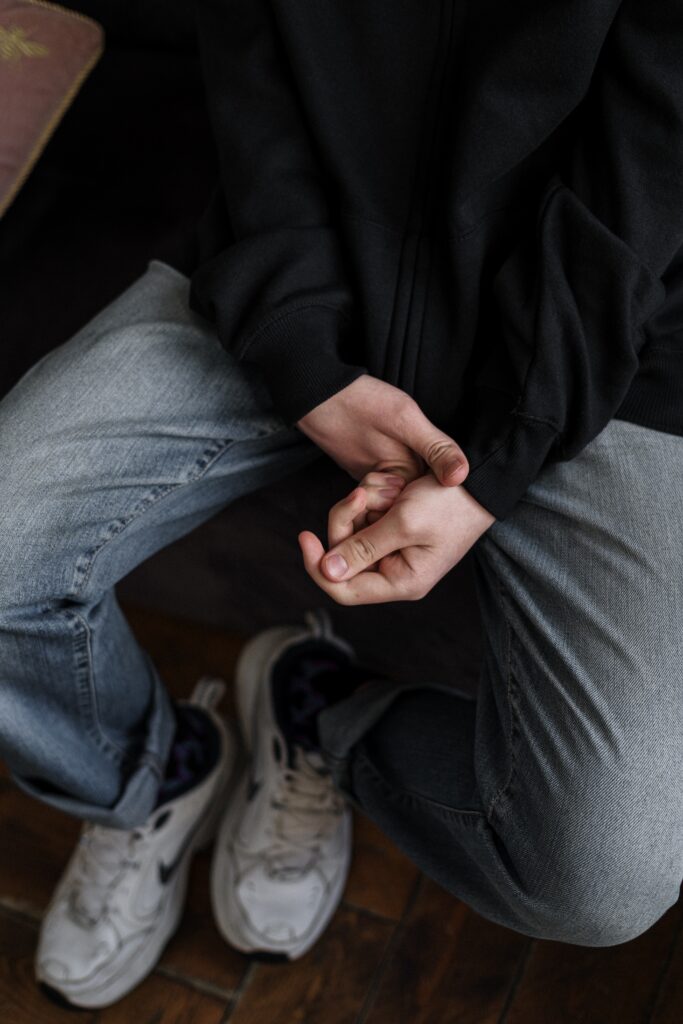
‘Make it meaningful’: How Ontario youth can cope with the pandemic’s mental health toll
As we enter the sixth month of the COVID-19 pandemic, the need for accessible and affordable mental health services in Canada and Ontario is accelerating.
“Everybody is recognizing the impact that this virus is having on their wellness, and that includes their mental health wellness,” said Helen Fishburn, executive director of the Canadian Mental Health Association Waterloo Wellington.
In the early stages of the pandemic, half of Canadians reported their mental health worsening.
A report by the Toronto’s Centre for Addiction and Mental Health (CAMH) suggests that young adults below the age of 40 are more likely to experience moderate to severe anxiety, binge drink, and feel lonely and depressed as a result of this pandemic.
A Deloitte study also found that there will be a 54 to 163 per cent increase of Canadians visiting a doctor for mental health issues. Visits to emergency rooms that pertain to stress and anxiety-related disorders will increase from one to three per cent in Canada.
It’s no wonder the majority of Ontarians believe “a serious mental health crisis” is on its way, especially for young people.
“[COVID-19 has] really changed the needs of mental health services across the world and in Ontario,” Fishburn said.
“There are going to be so many more new layers of anxiety, worry and stress that we’re going to need help with. More help and more resources available for people to transition and be supported through the next wave of things [are needed].”
Sitting with uncertainty is a huge factor in youth mental health decline
Mental health therapist Michelle Gonsalves believes that not knowing what lies in the future is a significant contributor to young people’s mental health worsening.
“It’s not knowing what the next steps are,” she said. According to Gonsalves, young people are thinking, “What’s going to happen next year? Is everything going to be online? What kind of education will I be getting?”
“It’s incredibly difficult and anxiety-provoking,” she said.
This uncertainty also results in a lot of youth in Ontario to experience a decrease in motivation, Gonsalves adds.
“Basically it’s like ‘The world is ending’ or ‘’People are dying from this pandemic, and here I am trying to submit this paper that I know, in all likelihood, will not impact my life in this great way and move forward,’” she said. “And so [people are thinking,] ‘What’s the point? Why should I even bother writing this paper? Why should I bother thinking about my future?’”
Different impacts for different age groups
Gonsalves believes that different age groups in the youth demographic are most likely experiencing different worries, which can affect their mental health.
Gonsalves says that most of her clients between the ages of 25 and 30 are new in the job market after finishing post-secondary school in recent years.
As some of the employees with the lowest seniority, many people in this age group have been laid off during the pandemic. “There’s lots of grief around that and financial stress, and financial anxiety,” Gonsalves said.
When it comes to her clients who are in their early 20s, Gonsalves says there are fewer financial worries, but many feel lonely and lack motivation because they are not socializing as much as usual with friends.
Switching to virtual therapy was a big shift, but will be here to stay
“I have not physically seen a client since the beginning of March. All of my sessions have been either video or phone,” Gonsalves said. “For some people, the switch to remote sessions was very seamless and very easy. For others, it’s been a real big challenge.”
One of these “challenges,” Gonsalves adds, is privacy.
“[Clients] want to talk about relationship issues with a partner that they live with,” she said. “Now, they’re home and their partners are working from home and everybody’s working from home and they’re doing sessions with me.”
In some cases, for clients who wanted to talk about their relationships but could not feel privacy in their own homes, Gonsalves told them to go for a drive, to be away from their partner during the session.
“We [would] then have a private video session or a private phone session,” she said.
Gonsalves says it has taken her time to adapt to picking up social cues and body language while doing virtual therapy.
“It’s not just what you’re saying, it’s the tone, it’s the way in which you’re sitting, it’s your facial expressions and all those things,” she said.
But despite these challenges, Gonsalves says that virtual therapy has “proven to be almost as effective.” Gonsalves has also seen other positive outcomes from virtual therapy, which is why she believes it is here to stay, even post-pandemic.
For one thing, Gonsalves finds that clients on the phone are more open than in person or in video sessions.

“I don’t know if it’s the ego piece of seeing my face and worrying about what I look like,” she said. “[But] some of the clients have gotten on a much deeper level on mental health through their phone.”
Virtual therapy can also benefit both the client and therapist, as it reduces commuting time and opens up more availability. “I can see clients on their lunch hour, I could never do that before,” Gonsalves said.
Gonsalves adds that virtual therapy gives her the chance to reach out to more people who are located further away from her office. “I’m based in Toronto right now,” she said. “Let’s say I decide to move to Burlington — I now can see clients in Burlington and Toronto remotely.”
Stigma surrounding accessing mental health services has reduced, but is still present
Gonsalves says she finds that a lot of people talk to a general practitioner to address their mental health needs. “There seems to be almost less stigma around going to a doctor to get anxiety medication than there is going to a therapist and talk therapy and learn skills to manage your anxiety,” she said.
Gonsalves believes that more knowledge in showing the symbiotic relationship between mental health and physical health is key to reduce this stigma, she says.
“If they can improve their mental health, their heart health may improve, their diabetes may improve, their migraines might approve,” she said. “It’s all very much linked.”
Fishburn says the same, and she also believes that the effects of the pandemic might help reduce the stigma surrounding mental health.
“We’re hoping there’s kind of a new openness to embracing the importance of sharing and acknowledging and recognizing mental health as a total health package,” Fishburn said. “We really want people to recognize the overwhelming impact that this crisis creates.”
Experts say more provincial funding and action is needed
Earlier in July, the Canadian Mental Health Association – Ontario (CMHA-Ontario) released a statement saying more funding by the Ontario government is needed to address this mental health crisis as soon as possible, while also demanding funding for specific services.
“To date, the province has not kept up with promised, targeted investments for mental health and addictions year over year,” they said. “For the mental health and addictions sector to continue to provide the often life-saving treatment and services Ontarians need, a comprehensive response package is needed.”
“The government is committed to fixing our broken and fragmented mental health care system so clients can access the quality care they need and deserve,” said David Jensen, spokesperson for the Ontario Ministry of Health, in an emailed statement.
According to Jensen, the government “is investing $3.8 billion over 10 years to develop and implement a comprehensive and connected mental health and addictions system for Ontarians. This included investments of $174 million in 2019-20 including investments focused on the needs of children and youth.”
Moreover, the government also announced back in April a commitment of $12 million to support mental health and addiction services, including virtual tools.
Gonsalves believes that Ontario needs to do a better job in addressing the mental health effects of the pandemic, though she understands why it wasn’t addressed right away.
“In the middle of the pandemic, you have to look at basic survival needs,” she said. “How is someone going to say ‘I need help going to therapy?’ when you can’t pay your rent or put food on the table?”
“As a province, you’d have to address those immediate needs,” she added.
Gonsalves also believes the province should address how connected mental health is to physical health.
“You also have the mental health risk of if you remain in isolation and you barely talk to anyone or see anyone,” she said. “The physical health risks are incredibly high, so what good is keeping yourself physically healthy, [while] mentally you’re having a breakdown every day?”
Affordable and accessible virtual mental health services for young people in Ontario
“A guided self-help program for adults and youth aged 15 and over, using workbooks with online videos and phone coaching support,” David Jensen said. BounceBack was one of the youth specific support tools that the government of Ontario recently invested in. The program is free and helps youth in managing “low mood, mild to moderate depression and anxiety, stress or worry.”
Another virtual service that was part of the $12 million investment. This free, confidential helpline is available 24/7 and helps people between the ages of 17 and 25 with professional counselling. Jensen says that volunteer-led,text-based support is also available in English and French at 1-800-668-6868.
According to Jensen, this ministry-funded program “provides free and confidential information to people experiencing problems with mental health, alcohol or drugs, and/or problem gambling. ConnexOntario’s system navigator specialists are trained in emergency mental health interventions and answer calls, e-mails or web-chat requests 24 hours a day, seven days a week.” You can also call their specialists at 1-866-531-2600.
Mood Disorders Association of Ontario:
This program offers free support to people living with depression, anxiety, or bipolar disorder. You can call their support line at 1-888-486-8236. They are available Monday to Friday from 9:30 a.m. to 5:00 p.m.
This free helpline offers confidential LGBTTQQ2SI peer support to young people from Sunday to Friday, 4:00 p.m. to 9:30 p.m. You can call them at 416-268-9688 or text them at 647-694-4275.
This trans-led group connects trans people to community resources. You can call the Canadian hotline at 1-877-330-6366.
This free, confidential hotline is available for post-secondary students in Ontario, 24/7/365. You can call 1-86692505454 to receive professional counselling and information on mental health and addictions resources.
This artificial intelligence app offers cognitive behaviour therapy support to those experiencing low moods, and symptoms of depression and anxiety. Funded by the Local Health Integration Networks (LHINs), those living in LHIN-specific regions can get the app for free by downloading the app on your electronic device and using the referral code “Ontario.”
This time can be an opportunity to ‘sit in the stillness’ and transform:
Gonsalves believes that despite the mental health challenges that young people have faced, the pandemic has brought them an opportunity to reflect and act.
“We have never seen more clearly what the issues are,” she said. “We have no more distractions, whereas before we had distractions with concerts, festivals, seeing people, travel plans.”
“Now, we remove all of these distractions — not by choice, but because we’re forced to not do all of these things — what are you left with? You’re left with your own kind of stuff — mental health — to deal with. You’re left to sit in the stillness and it’s been incredibly hard for some people.”
This sitting “in the stillness” has led some of her clients to end relationships, change career paths, and recognize the importance of self-care, elements that she considers to be important to maintaining wellness.
“It’s been an honour to witness some of the transformations in these young people, and I’m proud of them,” she said.
Gonsalves says she knows this specific point in time is unique, and encourages young people to “make it meaningful.”
“Either we can be debilitated by [the pandemic] and we can be victimizing … or you use this time as a meaningful thing to say, ‘When I come out of this COVID, what do I want to say about myself?’” she said.
“As hard as it’s been for a lot of the youth, I’ve seen such great resilience to say ‘I can look at this and find meaning in this time, and I can transform myself for the better.’”
About the author
Ramona Leitao is a former managing editor of Youth Mind. When not writing, or taking photos, you’ll find her baking her signature baguettes while crying to Studio Ghibli soundtracks.







